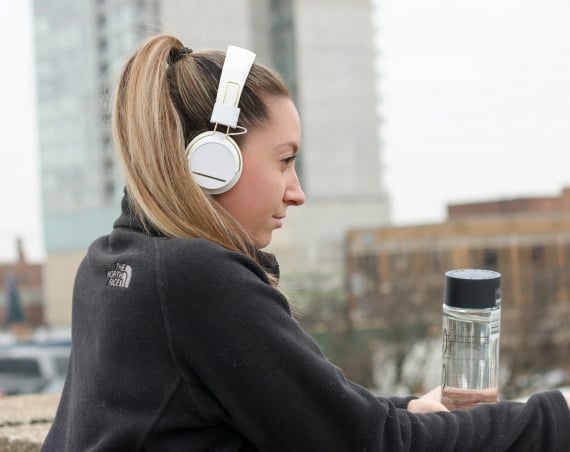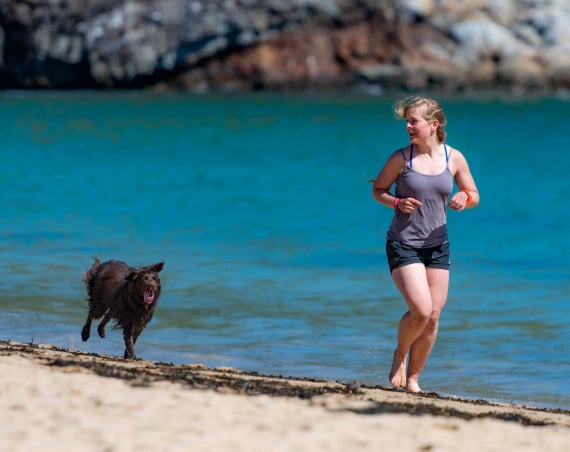It’s easy to start running. In fact, all you need is a good pair of running shoes and the motivation to get moving. But if you want to make sure that occasional urge turns into a fully formed habit, you need to take up running in a way that suits your current lifestyle, taking into account your level of health, fitness, and mobility.
Find out how to get started, make steady progress towards longer distances, and unlock all the benefits running has to offer — from weight management to better mental health.
Walk, jog, run
Every beginner’s running plan should start small. Even if your final goal is to be able to run at a high intensity for long periods, consider starting your programme by combining walking, jogging, and running within the same session. For many new runners, this is an effective way to gradually build endurance while reducing stress on the joints. Our expert-designed 5k and 10k training plans, in fact, involve all three paces.
Regardless of your ability, you should always make time for leg stretches before and after a run. Whether you want to run at high intensity or combine walking, jogging, and running, stretching properly is the best way to improve flexibility, increase joint mobility, and reduce the risk of injury.
Don’t be put off if you have the occasional bad run, where nothing seems to go quite right. It’s totally normal, and you can shake it off before your next session.
The magic mile
Although most runners train with specific distances in mind, there is an alternative milestone for beginners to consider. The mile, in fact, isn’t only a good target to strive for: it’s an effective distance to gauge your progress without running yourself into the ground.
Novice runners with moderate fitness levels can usually complete the mile in a fairly short amount of time, but simply going the distance can also represent a good achievement. As your endurance and stamina improve, aim to trim a minute or two off your mile time. Just leave the fabled 4-minute mile to elite-level athletes!
Running alone vs. running with others
Running can be either a social or solo pursuit, and there are unique benefits to each. It all depends on your routine and your personality.
The benefits of solo running
- You can choose your own schedule and go at your own pace
- It may be easier to focus on your form and listen to your body
- Running alone is a great way to hone your mental strength
- Solo running is “me time”, allowing you to be alone with your thoughts
- You can listen to music to stick to your target pace, whether it’s 100 BPM for a brisk walk or 180 BPM for serious striding
The benefits of group running
- Keeping pace with others can help you improve your performance
- Group running is social, so you can form bonds with like-minded people
- Feeling duty-bound to show up is a great motivator, especially in winter
- Running as part of the group may feel safer than doing it alone
If you think running as part of a group would be more your style — or you simply want to complement your solo runs with the occasional group session — the DL Run Club is a great running club for beginners and veterans alike.
Can you be too old to start running?
It can be more challenging to start a new sport after your 20s and 30s, but age alone will not prevent you from becoming a runner. As long as you put in the effort, train effectively, and move your overall fitness in the right direction, you can become a strong runner in less time than you think.
Running, in fact, may have more significant health benefits the older you get. As a form of endurance exercise, it can help reduce blood pressure and lower cholesterol. It can also reverse decreases in muscle mass and flexibility, increase bone mineral density (BMD), and even prevent osteoporosis.
If you have mobility challenges that affect your range of motion, make sure you incorporate mobility exercises into your stretching routine. Pay particular attention to:
- Feet and ankles: Foot rolls, toe raises, and heel drops will help your feet and ankles absorb and distribute force more effectively.
- Knees: Maintain mobility in your knees with passive knee extensions (using a chair or stool to put your hip and foot at the same height), knee rotations, and assisted knee flexions (pulling each knee to your chest while sitting on the floor).
- Hips: Knee drives, floor-based stretches, and certain yoga poses — like the yogi squat — can alleviate tightness in your hip flexors, back, glutes, and hamstrings.
- Spine and shoulders: Don’t forget your upper body! Promote strength and mobility with a short set of high planks and shoulder rotations.
Indoor vs outdoor running
Some people love nothing more than the feeling of running outside – and you may be one of them! However, there are some circumstances where you may want to take it indoors to a treadmill, such as during cold winter months, when there’s a risk of slipping on ice, and evenings and mornings are darker. Running on a treadmill can also support your joints – something an older runner may very well appreciate.
There are different kinds of treadmill for at-home and in-gym running, from the Woodway Curve, which is powered by the runner, to motorised treadmills.
Want to try indoor running? Discover what your local David Lloyd Club can offer.
Running gear for beginners
Remember when we said all you need is a good pair of running shoes? While that’s true, there are other pieces of kit that can help you progress and feel good about your run.
- Running top: Invest in a “technical” shirt that wicks sweat away from your skin to the outer surface of the fabric, where it evaporates. It should feel light, cool, and comfortable against the skin.
- Lightweight jacket: You may need another layer for cold or wet weather, but it will still need to be breathable. Pick a showerproof, breathable jacket rather than a fully waterproof one that traps heat.
- Running socks: Buy seamless, wicking running socks that reduce friction and prevent blisters. Some socks may also feature padding for extra comfort.
- High-visibility accessories: If your outerwear doesn’t already have reflective strips, get a fluorescent bib or armband to make sure you’re visible in low light.
- Water bottle: Once you progress to longer distances, you may need to bring water with you to stay hydrated. Opt for a water belt or a bottle with integrated an handle.
- And, of course, running shoes: Choose a well-respected brand if you can — like HOKA — and always engage with trained salespeople to ensure a good fit and sufficient cushioning.
Ready to start your journey? Get fully acquainted with the many benefits of running before you lace up, limber up, and get moving.
Find a club



